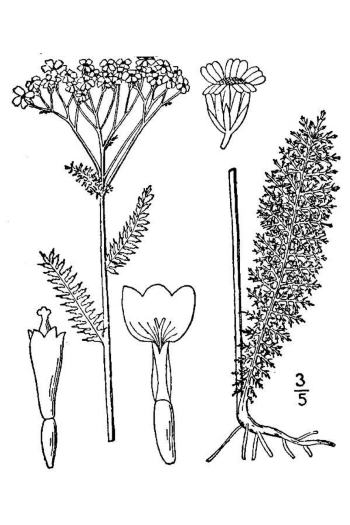Achillea millefolium
|
|
 |
Photo courtesy Renee Brecht |
Britton & Brown |
| Botanical name: | Achillea millefolium |
| Common name: | common yarrow |
| Group: | dicot |
| Family: | Asteraceae |
| Growth type: | forb/herb |
| Duration: | perennial |
| Origin: | introduced |
| Plant height: | 1 -3' |
| Foliage: | Leaves alternate, finely pinnately divided |
| Flower: | white, heads 1/4" across |
| Flowering time: | June - September |
| Habitat: | dry uplands |
| Range in New Jersey: | statewide |
| Heritage ranking, if any: | n/a |
| Distribution: |  |
| Misc. | USDA
lists as a facultative upland species. Most yarrow is not native. It is considered invasive by some authorities. Yarrow was traditionally used in European folk medicine, to treat wounds, menstrual ailments, and bleeding hemorrhoids. It was also used to treat fevers, colds, and stomach and intestinal upset. Yarrow is often used in bird and butterfly gardens. There are a number of cultivars of yarrow as well that are used in gardening. Achilles, the Greek mythical figure who used it to stop the bleeding wounds of his soldiers; millefolium, thousand leaved. |